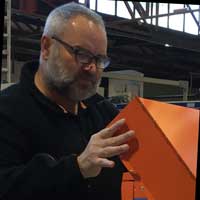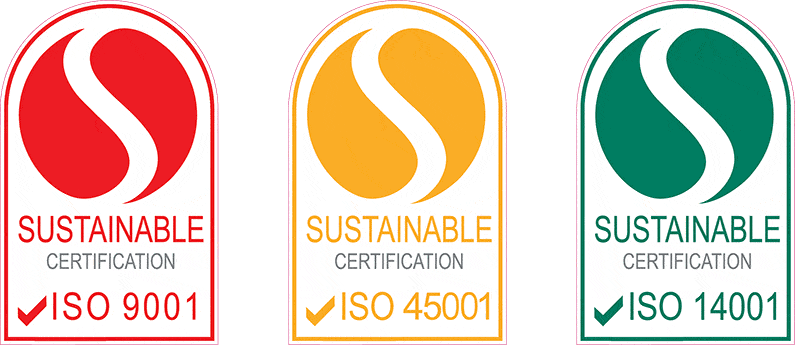
John Rakic
John Rakic is the proud Owner and Managing Director of Trafalgar Group with over 20 years of experience in the passive fire industry.
It was around 30 years ago when I first heard the word “intumescent”. Little did I know that day would change my working life. It took me ages to remember how to spell it and to pronounce it correctly.
If I’m honest, this word and the phenomena of intumescing has been a huge part of my working life.
So, what is it?
Simply put, to intumesce—the verb which comes from the Latin word “intumesco”—means to swell up (“I become swollen”).
It is fair to say that passive fire protection (or fire stopping) has adopted the word, and intumescent materials are well known to those who work in this field.
This is just a snippet of the full article. To read the entire article, download the pdf today.
Table of Contents
Intumescent for the Layperson
An intumescent material swells up when it gets hot, and typically—in terms of passive fire protection—forms a large volume mass of burnt swollen material, called a char.
The intumescent materials can close off openings, and once closed, can protect against the spread of flames, hot gases and heat or temperature transfer from the fire side to the non-fire side for long periods of time.
How does intumescent material work?
I like to say “the heat of the fire makes the material swell up and close off an opening” and leave it at that.
Sadly, the inquisitive nature of those who specify, buy, or approve passive products using intumescent materials want to know more. I have spent countless hours discussing intumescent materials with thousands of people over the last 30 years or so.
What temperature does it activate at?
How much force does it exert?
Will it swell up around a fire door so people cannot get out of their apartment?
Is the smoke toxic when it activates?
Is it expensive?
Does it have a shelf life?
Does it need to be replaced every three years in a building?
I hope after reading this article, I have answered the questions listed above and any other that come to mind for you.
A quick but important digression:
There are thousands of formulations of intumescent materials, so it makes no sense to talk in general terms about intumescent materials. The formulations or ingredients allow chemists and manufacturers to engineer their intumescent material to do the job they want them to do in the event of a fire.
To articulate my point, think of biscuits. Yes, those things we eat.
There are round ones, square ones, odd shapes, thick ones, thin one, sweet ones, savoury ones, creamy ones, coated ones, soft ones, hard ones. The variables are almost endless.
I am not saying for a minute you should try eating intumescent materials, but I think you can appreciate that every intumescent material is different based on its ingredients and how it is made.
Intumescent materials are proprietary; the manufacturer knows their secret herbs and spices, and this is their intellectual property.
Back to the question, how do intumescent materials work?
Simply speaking, just like self-rising flour in a cake, when put in the oven, the cake swells or rises to form a thicker volume of lighter density material.
Yes, a cake intumesces. Maybe that is why I chose biscuits as a useful analogy to help readers understand the variability of intumescent materials.
Let me get technical now, as many of you really know you want me to.
The answers come from combustion kinetics and thermogravimetry; it is the rate of heat (heating rates) and the amount of thermal energy an intumescent material sees that determines how quickly it reacts.
It is not the temperature of activation that is the way to describe the intumescent reaction, it is the amount of heat energy the material is exposed to that is important.
Simply put, we need to know how thermally sensitive the intumescent material is.
Just like a sprinkler head, intumescent materials have a response time index.
So, what happens when we get enough heat into an intumescent material?
The material goes through an initial devolatisation stage where the release of water vapour, other chemicals in the binders and a gaseous mixture (from graphite, for example) occurs, chemically forming a char. The continuous application of heat and chemistry results in heterogeneous combustion of the active part of the intumescent char (in this example, the graphite).
Intumescent additives undergo a thermal degradation process on heating, which produces a thermally stable, foamed, multicellular residue called an ‘intumescent char’. When these substances are added to a polymeric material which is later involved in a fire, they produce an intumescent char which accumulates on the surface, while the polymer is consumed, providing insulation to the underlying materials, and partially protecting it from the action of the flame.
You asked for it. Heat, chemical reactions, and a fire or heat-activated char forms.
Manufacturers of passive fire protection systems engineer the type of intumescent, the quantity and its geometry to provide the reaction they are looking for in a fire to limit the spread of fire and heat.
It is quite scientific and often hundreds of formulations and iterations of quantity and geometry are required to achieve the performance you are looking for.
Sadly, many manufacturers make silly claims about the temperature at which their intumescent materials start activating at to try and suggest their material is better than another. I can say with confidence it is not temperature, but rather it is heat sensitivity against a known amount of heat of energy which is the real measurement for intumescent materials.
In practice, it is nice to know all the performance attributes and have quantified the response time behaviour of a material, but the really important factors are:
- Does it work how you want it to? And,
- For regulatory purposes, can it pass the fire test as part of a system and allow an FRL or fire rating to be achieved?
Performance Criteria for Intumescent Materials
This might sound a bit funny, but more is not always better, nor is fastest and strongest!
There are many areas where intumescent materials are used in passive fire protection.
Some applications require fast and high expansion and a very strong and cohesive char whilst others require slower, marginal expansion and a weak char.
Can you think of where and why for both examples?
Fast, high expansion rate and strong char:
Example: A fire stop collar that needs to close off the opening formed by a softening plastic pipe.
Relatively slow, moderate expansion and softer char:
Example: An intumescent pad behind a hinge on a wooden door frame for a fire door, or the clear intumescent in laminated fire rated glass.
For those who wondered, it is the so-called baking powder or baking soda (acid salts) (or the secret ingredient in self-rising flour) that makes the cake rise or swell!


